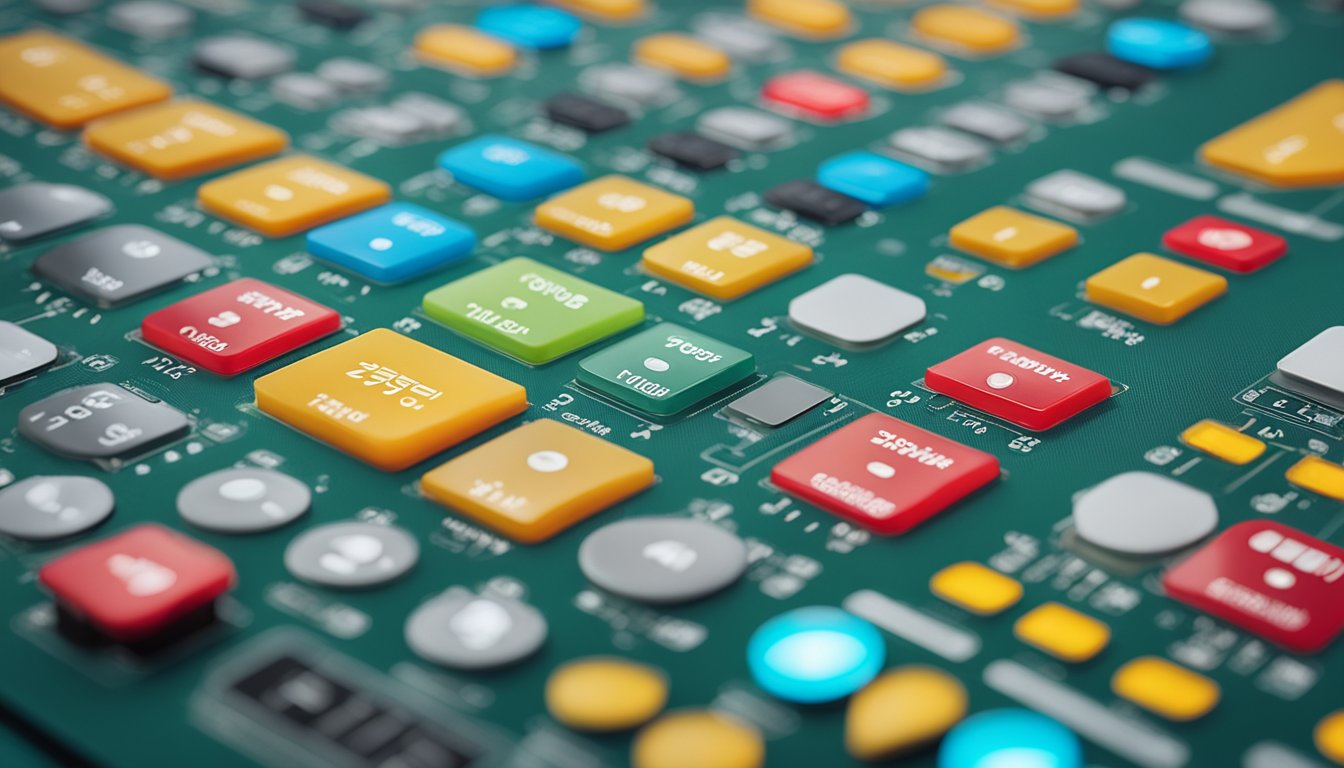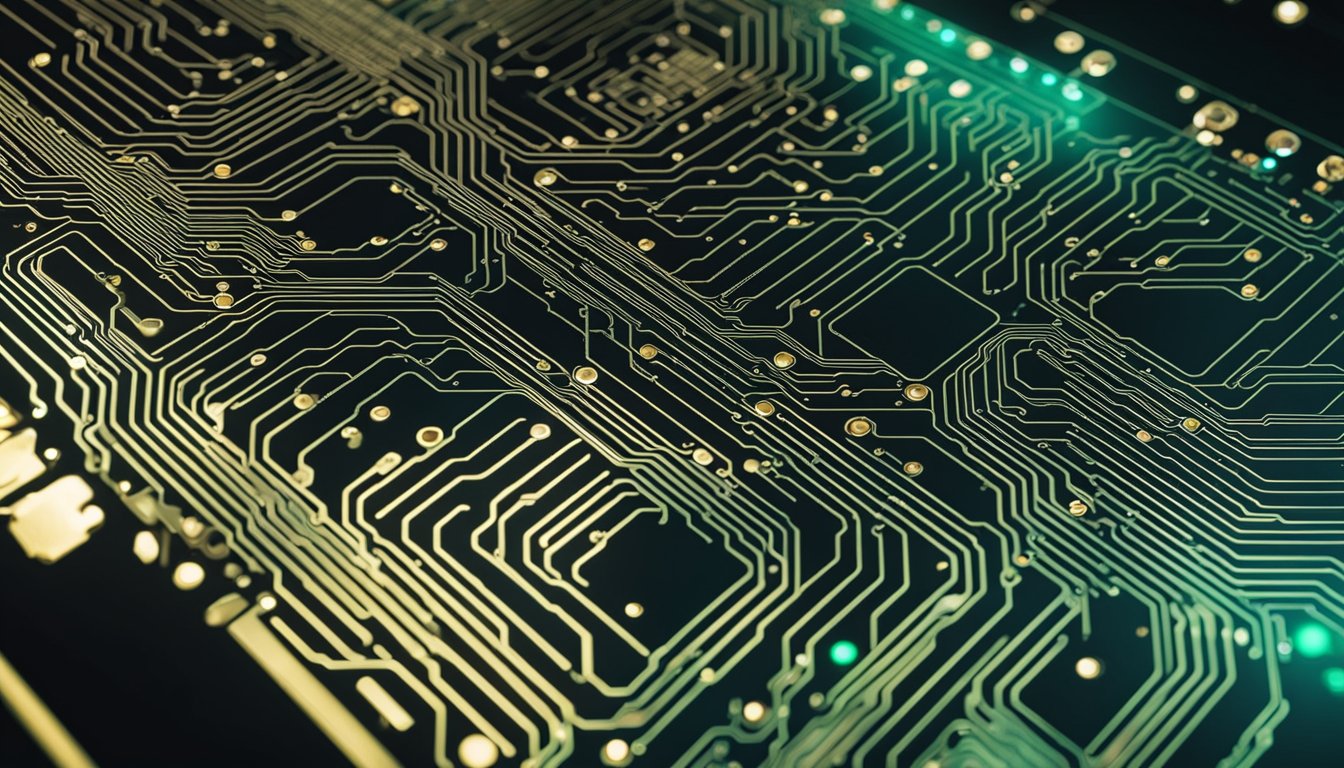Contact
Write to Us And We Would Be Happy to Advise You.
Do you have any questions, or would you like to speak directly with a representative?
By peter
If you’ve ever used a microwave oven, a calculator, or a remote control, then you’ve probably interacted with a Membrane Switch Types. These switches are thin, flexible, and durable components that can open or close the conducting path in an electrical circuit. They are commonly found in electronic devices and user interfaces, and they play a crucial role in making these devices user-friendly and functional.

There are several types of membrane switches available, each with its own unique properties and applications. Some of the most common types include tactile membrane switches, non-tactile membrane switches, and capacitive membrane switches. Tactile membrane switches provide physical feedback to the user when activated, while non-tactile membrane switches do not. Capacitive membrane switches use the electrical properties of the human body to detect user input, and they are commonly found in touchscreens and other interactive displays.
In this article, we will explore the different types of membrane switches in more detail, and we will discuss their features, applications, and benefits. We will also examine the circuitry, embossing styles, backlighting options, and surface finishes and textures of membrane switches, and we will provide practical tips and guidelines for selecting and using these components. By the end of this article, you will have a better understanding of membrane switches and their role in modern electronics.

When it comes to membrane switches, there are several types to choose from. Each type has its own set of characteristics, which makes them ideal for different applications. In this section, we will discuss the basic membrane switch types that you should know about.
Tactile membrane switches are designed to provide tactile feedback when pressed. They have a snap dome or metal dome that provides a tactile response when activated. This type of switch is commonly used in applications that require a high level of accuracy, such as medical equipment, aerospace, and military applications.
Non-tactile membrane switches do not provide tactile feedback when pressed. They are often used in applications where a low profile is required, such as consumer electronics. Non-tactile switches are typically less expensive than tactile switches and are easier to manufacture.
Flexible membrane switches are designed to be flexible and bendable. They are often used in applications where the switch needs to conform to a curved or irregular surface. Flexible switches are typically made from a combination of polyester and polycarbonate materials, which makes them durable and long-lasting.
Rigid back panel membrane switches are designed to be mounted on a rigid surface, such as a metal or plastic panel. They are often used in applications where the switch needs to be mounted in a fixed location. Rigid switches are typically more expensive than flexible switches and are less common in consumer electronics applications.
In summary, there are several types of membrane switches to choose from, each with its own unique characteristics. Tactile switches provide tactile feedback, non-tactile switches do not, flexible switches are bendable, and rigid switches are mounted on a rigid surface. When selecting a membrane switch, it is important to consider the application requirements to ensure that the right type of switch is selected.

Membrane switches are made up of several layers of materials that work together to create a functional switch. One of the most important layers is the circuitry layer, which carries electrical signals from the switch to the device. There are several types of circuitry used in membrane switches, each with its own advantages and disadvantages.
Silver flex circuitry is one of the most common types of circuitry used in membrane switches. It is made up of a thin layer of silver ink that is screen printed onto a flexible substrate, such as polyester. The silver ink is then cured to create a conductive circuit. Silver flex circuitry is known for its durability and flexibility, making it ideal for use in applications that require repeated use.
Copper flex circuitry is another type of circuitry used in membrane switches. It is similar to silver flex circuitry, but is made up of a thin layer of copper instead of silver. Copper flex circuitry is known for its superior conductivity and is often used in high-performance applications where speed and accuracy are critical.
Printed circuit board (PCB) based membrane switches are a newer type of membrane switch circuitry that uses a printed circuit board as the base layer. This type of circuitry is known for its high precision and accuracy, making it ideal for use in applications that require precise control. PCB-based membrane switches are also known for their durability and resistance to wear and tear.
In summary, membrane switch circuitry plays a critical role in the overall functionality and performance of membrane switches. Silver flex, copper flex, and PCB-based circuitry are all commonly used in membrane switches, each with its own advantages and disadvantages. When choosing a membrane switch for your application, it is important to consider the type of circuitry used and its suitability for your specific needs.
When it comes to membrane switches, one important aspect to consider is the embossing style. This refers to the shape and design of the raised button or feature on the switch. There are three main types of embossing styles that are commonly used in membrane switches: pillow, dome, and rim.
Pillow embossing is the most basic type of embossing. It involves creating a raised area on the switch that is shaped like a small pillow. This type of embossing is often used for simple switches that do not require a lot of tactile feedback. Pillow embossing is the least expensive option, making it a popular choice for cost-sensitive applications.
Dome embossing is a more complex type of embossing that involves creating a raised area on the switch that is shaped like a dome. This type of embossing is often used for switches that require a higher level of tactile feedback. The dome shape provides a more pronounced tactile response, making it easier for users to feel when they have pressed the button. Dome embossing is more expensive than pillow embossing, but it provides a better user experience.
Rim embossing involves creating a raised area on the switch that is shaped like a rim. This type of embossing is often used for switches that require a higher level of visual feedback. The raised rim around the button makes it easier for users to see where they need to press. Rim embossing can be used in combination with pillow or dome embossing to provide both visual and tactile feedback.
In conclusion, when choosing a membrane switch, it is important to consider the embossing style. Pillow embossing is the most basic and least expensive option, while dome embossing provides a better tactile response. Rim embossing is useful for providing visual feedback. By understanding the different embossing styles, you can choose the right switch for your application.
When designing a membrane switch, backlighting can be used to highlight or draw attention to certain key areas of the graphic overlay or to aid visibility in low lighting conditions. There are several options for incorporating backlighting into a membrane switch assembly, each with its own advantages and disadvantages.
Electroluminescent (EL) backlighting is a popular option for membrane switches. EL backlighting is a thin, flexible panel that emits a uniform light across the entire surface. This type of backlighting is energy-efficient, requires low voltage, and has a long lifespan. EL backlighting is also very thin and can be easily integrated into the membrane switch assembly. However, EL backlighting is not as bright as other types of backlighting and is typically more expensive.
Light Emitting Diode (LED) backlighting is another popular option for membrane switches. LED backlighting is energy-efficient, has a long lifespan, and can be very bright. LED backlighting is also available in a variety of colors, making it a versatile option for designers. However, LED backlighting can be more expensive than other types of backlighting and may require additional components such as resistors and capacitors.
Fiber optic backlighting is a newer option for membrane switches. Fiber optic backlighting uses strands of fiber optic cable to transmit light from a remote light source to the membrane switch assembly. This type of backlighting is energy-efficient, has a long lifespan, and can be very bright. Fiber optic backlighting is also very thin and can be easily integrated into the membrane switch assembly. However, fiber optic backlighting can be more expensive than other types of backlighting and requires additional components such as light sources and fiber optic cable.
When it comes to membrane switch design, the surface finish and texture of the overlay can make a big impact on the overall aesthetic and functionality of the device. In this section, we will explore some of the most common surface finishes and textures used in membrane switches.
Anti-glare finishes are designed to reduce glare and reflection on the surface of the overlay. These finishes are particularly useful in outdoor or brightly lit environments where glare can make it difficult to read the display. Anti-glare finishes can be achieved through the use of special coatings or by adding a diffusing layer to the overlay.
Matte finishes are a popular choice for membrane switches because they provide a smooth, non-reflective surface that is easy to read in a variety of lighting conditions. Matte finishes can be achieved through the use of special coatings or by adding a matte layer to the overlay. Matte finishes can also help to hide small scratches and surface flaws.
Textured overlays can improve the user experience by giving the overlay a tactile sensation. Textured finishes can vary from faint patterns to bolder textures, and can be used to create a distinct feel for the device. Additionally, textured coatings can be useful for hiding small scratches and surface flaws.
In summary, the surface finish and texture of a membrane switch overlay can have a significant impact on the overall functionality and aesthetic of the device. Whether you choose an anti-glare finish, matte finish, or textured overlay, it is important to consider the specific needs of your device and choose a surface finish that will meet those needs.
Do you have any questions, or would you like to speak directly with a representative?